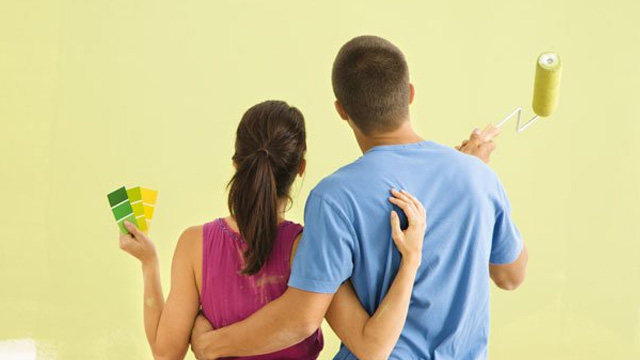Follow our step-by-step guide to ensure you don’t have flaky walls, ugly bumps and paint on unwanted areas.

Follow our step-by-step guide to ensure you don’t have flaky walls, ugly bumps and paint on unwanted areas.
- Arrange all tools: Before you start with painting, make sure that you have all the tools that you will need for the job. Whatever colour you choose to paint your room with, have enough of it. You will also need a primer, sponge, masking tape, 5-in1, roller, paint brush and Spackle. It is not a very good idea to run out to buy things while you are painting.
- Choose the right paint and primer: Always use a primer before painting, especially if you have damp surfaces on the wall. A primer makes the surface dry and easier to paint on. Go for a water-based primer and water-based colour. A water-based primer will not work for an oil-based paint. A darker shade will make the room look smaller and a lighter one will give an illusion of a bigger space.
- Remove stuff: Remove all furniture, bags and your other belonging from the room, and stuff which you move, cover it properly with a plastic sheet or cloth.
- Cleaning: Using a sponge, clear out all the dust, stain, oil marks from the wall. If you have grease on the wall, use a detergent to scrape it off as it will hinder the application of paint. You will have to make sure that the wall is thoroughly clean and if there is old paint chipping off it, use a metal brush to scrape it. You should be able to wipe the wall without having anything come off.
- Masking: Cover all areas and surfaces you don’t want to paint. For instance, if there is a narrow wooden detailing on your walls, mask it and also all the plugs and switchboards. Cover the bottom of the walls, which generally have a marble detailing and doorknobs with the tape.
- Flooring: Spear a piece of cloth or paper on the floor to avoid paint dripping on it. Paint drops on floors look quite ugly and are also very difficult to remove. So cover the area completely, without leaving an inch.
- Spackle: If you have small holes and gaps in the wall, use Spackle to fill them up. Ensure that you don’t have any bumps and depressions on the wall.
- Primer: Shake the can thoroughly before applying the primer and stir it well. Cover your nose and mouth with a cloth to avoid inhaling any toxins from the paint. Take primer out on a rolling tray and dip your roller properly and roll over the wall in an up-and-down motion.
- Paint: Take out paint on a roller tray. For the edges of the wall, use a brush and paint them with a thickness of not more than 2 cm. Once you have marked all the edges, dip your roller and when you take it out, make sure that the paint is not dripping. Again, in an up-and-down motion, paint your walls. Always use a new roller to avoid paint, which may have got stuck on it from the previous time, spoiling your new one. And when you buy the roller, keep it properly covered to avoid any dust settling on it as it will show on your wall.





